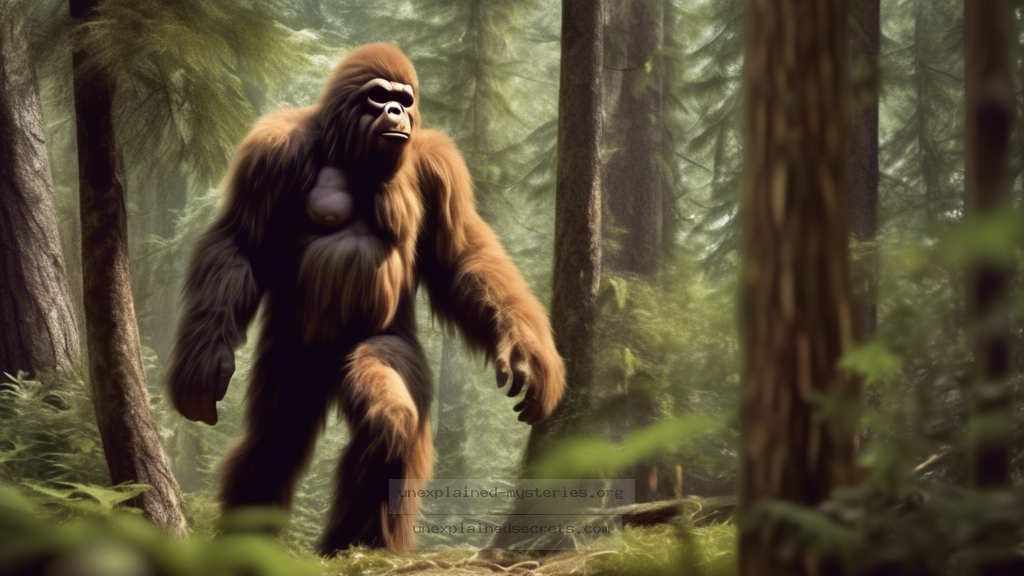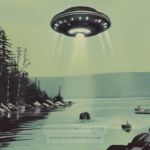What Compelling Evidence Exists That Could Prove Bigfoot’s Existence?
What Compelling Evidence Exists That Could Prove Bigfoot’s Existence?
The mystery of Bigfoot has fascinated enthusiasts, skeptics, and researchers alike for decades. This cryptid, often described as a large, ape-like creature, is said to inhabit remote forests, particularly in the Pacific Northwest of North America. But what compelling evidence exists that could potentially prove Bigfoot’s existence? This question is not just an inquiry into the existence of a creature; it’s a dive into the realms of folklore, the scientific method, and the human penchant for mystery. In this post, we will explore various forms of evidence, historical accounts, and ongoing research surrounding Bigfoot, aiming to provide a comprehensive answer to this intriguing question.
Historical Context: Legends and Folklore
The concept of Bigfoot is not a modern invention; it has roots in various indigenous cultures across North America. Many Native American tribes have long spoken of a creature resembling Bigfoot, often referred to by names such as “Sasquatch” or “Yeti.” These legends often describe a large, hairy humanoid that roams the woods, sometimes depicted as a guardian of nature. The oral traditions surrounding these creatures date back centuries, indicating that the fascination with such beings is deeply embedded in cultural history.
One of the earliest documented sightings can be traced back to the 1800s when a series of reports from miners in California described encounters with a large, hairy creature in the Sierra Nevada mountains. These accounts laid the groundwork for what would become the modern Bigfoot phenomenon, particularly after the famous Patterson-Gimlin film was released in 1967, showing what many believe to be a genuine Bigfoot.
Core Concepts: Types of Evidence
When investigating the question of Bigfoot’s existence, various types of evidence are typically discussed. These can be categorized into several key areas:
- Physical Evidence: This includes hair samples, footprints, and other biological materials.
- Audio Evidence: Sounds attributed to Bigfoot, including howls and knocks.
- Visual Evidence: Photographs and videos that claim to capture Bigfoot in action.
- Witness Testimonies: Eyewitness accounts from individuals who claim to have seen Bigfoot.
Each of these types of evidence has its strengths and weaknesses, and they will be explored in greater detail in the following sections.
Physical Evidence: Footprints and Hair Samples
One of the most compelling pieces of evidence in the Bigfoot debate comes from the numerous footprint casts that have been discovered over the years. These footprints often measure up to 24 inches in length and can display unique features that some claim are not consistent with known wildlife. The most famous of these is the “Gimlin footprint,” which was cast in 1967 near the site of the Patterson-Gimlin film.
In addition to footprints, hair samples have also been collected, with some claiming that they do not match any known animal species. A notable example is the “hair from the Himalayas,” which was later analyzed and found to be unidentifiable. However, many skeptics argue that these samples often turn out to be from known animals, such as bears or deer, when subjected to detailed analysis. The challenge remains: how can one conclusively prove the origin of these samples without clear genetic evidence?
Key Point: While physical evidence like footprints and hair samples sparks interest, many have been debunked or attributed to known animals, highlighting the need for rigorous scientific verification.
Audio Evidence: Sounds of the Forest
Audio recordings have become a fascinating aspect of Bigfoot investigations. Various enthusiasts and researchers have reported capturing strange sounds, including howls, grunts, and wood-knocking noises that they attribute to Bigfoot. One of the most famous recordings is the “Sierra Sounds,” recorded in the 1970s by a group of researchers in California. The sounds were analyzed and displayed characteristics that some believe could not be produced by known animals.
However, like many forms of evidence, audio recordings can be subjective. Skeptics point out that many of these sounds can also be attributed to known animals or environmental noises. The challenge lies in definitively proving that these sounds are of unknown origin, a task that requires rigorous acoustic analysis and context-based research.
Visual Evidence: The Patterson-Gimlin Film
The Patterson-Gimlin film, shot in 1967, remains one of the most iconic pieces of evidence in the Bigfoot debate. The footage captures a large, bipedal creature walking through the woods, and has been analyzed extensively by both believers and skeptics. Proponents argue that the creature’s movement is too fluid and realistic to be a man in a suit, while skeptics contend that it could easily be faked.
Over the years, various experts have weighed in on the authenticity of the film. A team of researchers from the University of Southern California conducted a study on the film’s biomechanics and concluded that the creature’s gait was consistent with that of a large primate. However, this analysis is not universally accepted, and the debate continues, demonstrating the complexities of visual evidence in cryptozoology.
Notable Fact: The Patterson-Gimlin film is often cited in discussions about Bigfoot, illustrating how powerful visual evidence can be, even in the face of skepticism.
Witness Testimonies: Eyewitness Accounts
Eyewitness testimonies are pivotal in the investigation of Bigfoot. Thousands of individuals claim to have encountered the creature, and their stories vary widely in detail. From hikers in remote forests to residents of small towns, these accounts often describe a similar creature: large, hairy, and elusive.
One notable case is the encounter of a couple, Roger and Linda Patterson, who reported seeing Bigfoot in Northern California. Their experience inspired the creation of the Patterson-Gimlin film. However, witness accounts can be influenced by many factors, including the observer’s expectations, environmental conditions, and psychological predispositions. Thus, while these testimonies are compelling, they require critical analysis and corroboration.
Alternative Perspectives: Skepticism and Debunking
While many enthusiasts passionately pursue evidence supporting Bigfoot’s existence, skeptics argue from a scientific perspective that the lack of concrete evidence is telling. They point out that in a world with advanced technology and widespread exploration, the absence of a verified Bigfoot specimen is a significant gap. Many purported pieces of evidence have been proven hoaxes or misidentifications of known animals.
One famous example of debunking is the “Georgia Bigfoot Hoax,” where two men claimed to have discovered a Bigfoot body, only to reveal later that it was a rubber suit. This incident highlights the importance of critical thinking and scrutiny in the field of cryptozoology. Skeptics advocate for a more evidence-based approach, calling for rigorous scientific methods to study claims of Bigfoot sightings.
Warning: The excitement surrounding Bigfoot can lead to misinformation. Always scrutinize sources and be wary of sensational claims without scientific backing.
Common Misconceptions and Clarifications
As with any enigmatic subject, numerous misconceptions surround Bigfoot. One common belief is that Bigfoot is merely a modern myth, a product of imagination and folklore. While it’s true that many sightings and claims lack scientific backing, the cultural significance of such legends cannot be dismissed.
Another misconception is that all Bigfoot evidence is fabricated. While some hoaxes do exist, many enthusiasts genuinely believe in their experiences. It’s essential to differentiate between fraudulent claims and honest testimonies. Furthermore, many scientists assert that the search for Bigfoot is not inherently unscientific; it merely requires a more rigorous approach to evidence gathering and analysis.
Best Practices for Investigation or Study
For those interested in investigating the Bigfoot phenomenon, certain best practices can enhance the quality of research. First and foremost, researchers should prioritize scientific methods, such as gathering physical evidence that can be subjected to laboratory analysis. Keeping detailed logs of sightings, environmental conditions, and witness interviews can provide valuable data for future analysis.
Collaboration with experts in fields such as biology, anthropology, and environmental science can also offer insights that may not be readily apparent to amateur investigators. Engaging with established cryptozoological organizations can provide additional resources and networking opportunities for serious researchers.
Best Practice: Always document your findings meticulously, and be open to both skepticism and collaboration as you explore the Bigfoot mystery.
Future Developments and Ongoing Research
The search for Bigfoot continues to evolve, with advancements in technology offering new avenues for investigation. Drones equipped with thermal imaging cameras, for instance, can cover vast areas of terrain and potentially capture evidence that was previously unreachable. Environmental DNA (eDNA) analysis is another exciting development that allows researchers to collect genetic material from the environment, which could help in identifying previously unknown species.
Additionally, the rise of social media has enabled a platform for sharing sightings and gathering a community of interested researchers. Online forums and social media groups have become hubs for discussion, allowing individuals to share their experiences and collaborate on investigations. However, this also necessitates a cautious approach regarding the accuracy of shared information.
Conclusion: Is Bigfoot Real?
In addressing the question, “What compelling evidence exists that could prove Bigfoot’s existence?” we have explored a range of evidence types, historical contexts, and ongoing debates. While there are many compelling anecdotes, physical evidence, and witness accounts that suggest the possibility of Bigfoot, definitive proof remains elusive. The mystery surrounding this cryptid speaks to our fascination with the unknown and our desire to explore the frontiers of nature.
As research advances and methodologies improve, we may one day find conclusive evidence of Bigfoot’s existence—or definitively debunk the myth. Until then, the search continues, fueled by curiosity, passion, and the enduring allure of the unexplained. 💡
Other Articles
Recent Posts
- What Happened to Flight MH370? The Conspiracy Theories That Still Haunt Us
- What Secrets Lurk Within the Walls of the Infamous Trans-Allegheny Lunatic Asylum?
- What Evidence Supports the Existence of Bigfoot in the Pacific Northwest?
- What Happened to the Indus Valley Civilization? Unraveling the Mysteries of Ancient Urban Life
- Can Telepathy Be Scientifically Proven Through Laboratory Evidence?







